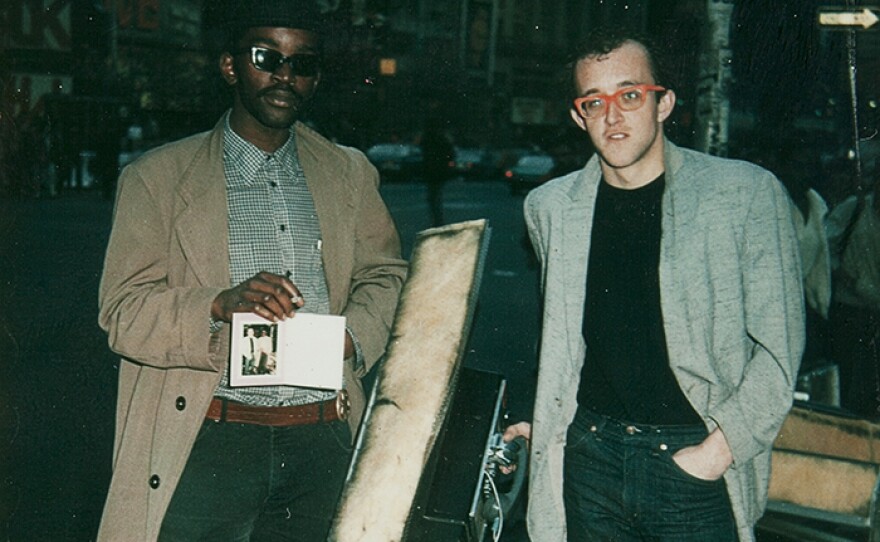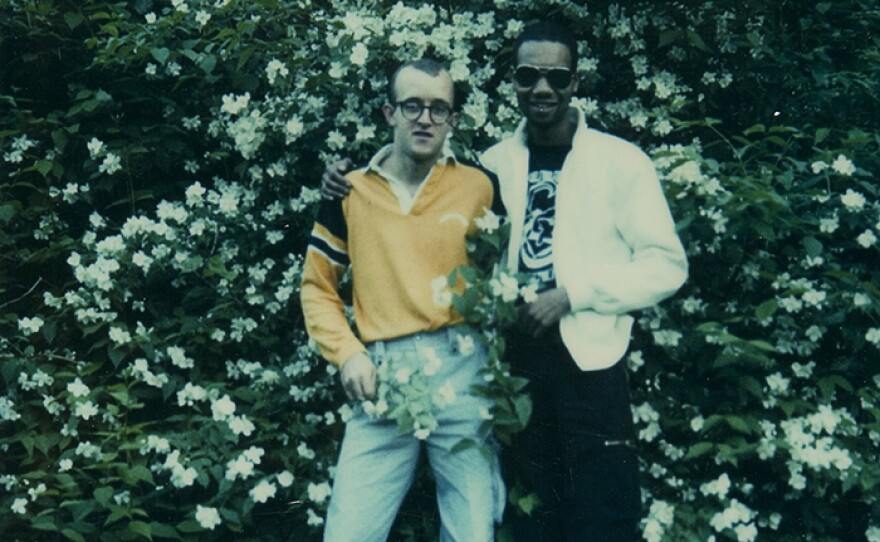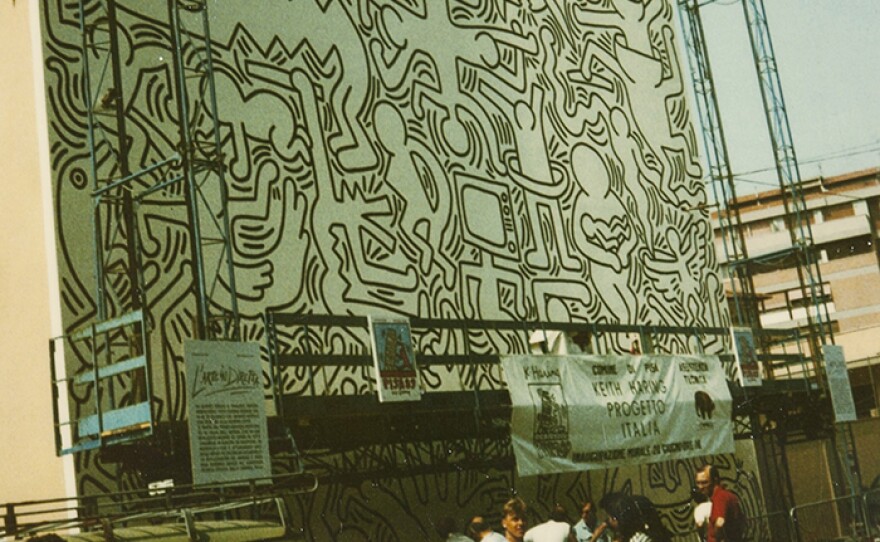Friday, Jan. 12, 2024 at 9 p.m. on KPBS 2 / Stream now with KPBS Passport!
Between 1980-1990, Keith Haring established himself as an art world celebrity and pop culture icon with a distinctive and instantly recognizable style that came to define the decade. This new documentary film is the definitive story of the artist in his own words. Following Haring’s AIDS diagnosis, he told writer and art critic John Gruen the story of his life in intimate and candid detail in 1989 for his biography. These previously unheard interviews form the narrative of AMERICAN MASTERS “Keith Haring: Street Art Boy.”
With exclusive, unprecedented access to the Haring Foundation’s archives, the film captures the wild, creative energy behind Haring’s art and the downtown New York culture of the 1980s that inspired him. Haring’s closest friends, family and collaborators — from the sleepy Kutztown, Pennsylvania of his youth to the mythic gay nightclubs of New York City — share revealing memories.

The film features interviews with Fab 5 Freddy, Lee Quinones, Tony Shafrazi, Bill T. Jones, Kenny Scharf, Ann Magnuson, Kurt Andersen, George Condo and others. On Feb. 16, 1990, Haring died at age 31 of AIDS-related complications, making the life-affirming artist a tragic icon of the AIDS crisis.
RELATED: 10 lesser-known facts about Keith Haring
RELATED: 3 ways Keith Haring showed the world that art is for everybody
Haring’s early career:
- Born on May 4, 1958, in Reading, Pennsylvania, and raised in nearby Kutztown, Haring became interested in art at a young age. He was influenced by Disney, the Peanuts, Dr. Seuss, and his father Allen, a keen amateur cartoonist.
- A conventional middle-class childhood was followed by a teenage curiosity that drew Haring to religion. He joined the evangelical Jesus movement, then turned to the counterculture, drugs and the Grateful Dead, hitchhiking across America, making and selling T-shirts along the way.
- In 1978, Haring dropped out of college in Pittsburgh and moved to New York, where he joined the School of Visual Arts as a scholarship student.

Haring and downtown New York culture:
- Haring immersed himself in the underground downtown art and music scene, home to new wave and punk.
- He became a fixture at Club 57, where he organized shows, made friends and creative connections with fellow artists like Kenny Scharf and Jean-Michel Basquiat, and experienced his identity as a gay man in an environment that celebrated queer culture.
- New York also exposed Haring to graffiti. He valued the direct connection to the public and began creating art using white chalk on empty black advertising panels in the subway.
- He called the New York City subway his “laboratory,” experimenting with ideas and form through the hundreds of drawings he made there over a five-year period.

Haring’s legacy:
- Encouraged by Andy Warhol, in 1986, Haring opened The Pop Shop in Soho, which sold his own designs on T-shirts, badges, watches, magnets and prints for everyday prices.
- Haring continued to make public works, painting over 50 vast public murals (often in hospitals and children’s centers) in Melbourne, Paris, Pisa, Monaco, Barcelona, Philadelphia, New York, Chicago and on the Berlin Wall.
- In 1988, Haring was diagnosed with AIDS. In 1989, he established the Keith Haring Foundation to raise money for AIDS organizations and children’s programs. He demonstrated publically against the stigma and prejudice associated with the disease.
- Haring’s art was shown in over 100 group and solo exhibitions during his lifetime and he continues to be celebrated as a major artist today, with works on display in exhibitions and museums around the world.

Watch On Your Schedule:
Stream the film now with KPBS Passport, a benefit for members supporting KPBS at $60 or more yearly, using your computer, smartphone, tablet, Roku, AppleTV, Amazon Fire or Chromecast. Learn how to activate your benefit now.
Subscribe To The American Masters Podcast:
Listen to new interviews with contemporary artists, along with previously unreleased interviews from the series' award-winning documentary films. Subscribe now
Join The Discussion:
AMERICAN MASTERS is on Facebook + Instagram #AmericanMastersPBS
Credits:
A production of BBC Studios for PBS and BBC with THIRTEEN Productions LLC. Filmed, directed and produced by Ben Anthony. Executive Producer Janet Lee. Producer Alice Rhodes. Michael Kantor is executive producer for THIRTEEN’s AMERICAN MASTERS.






